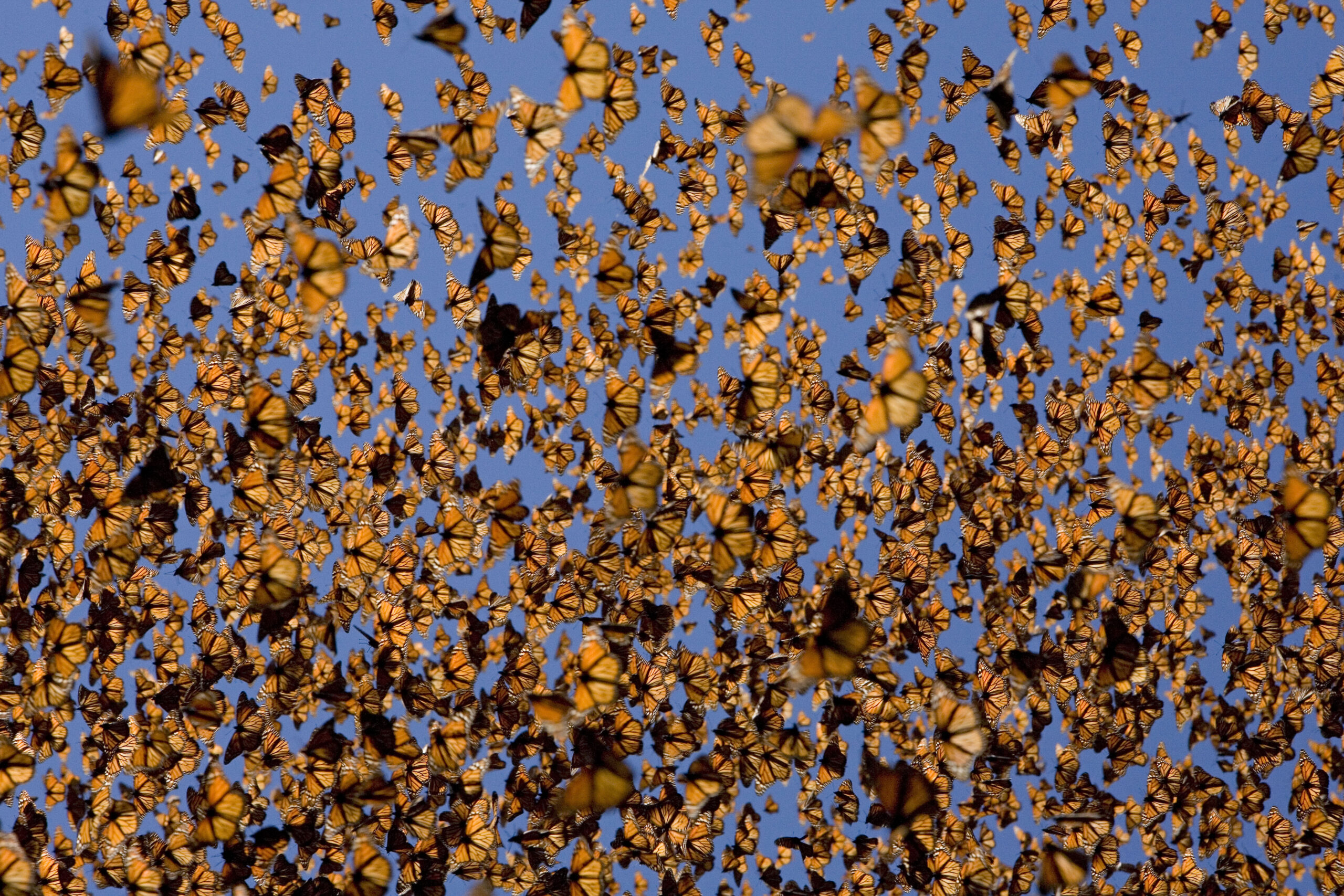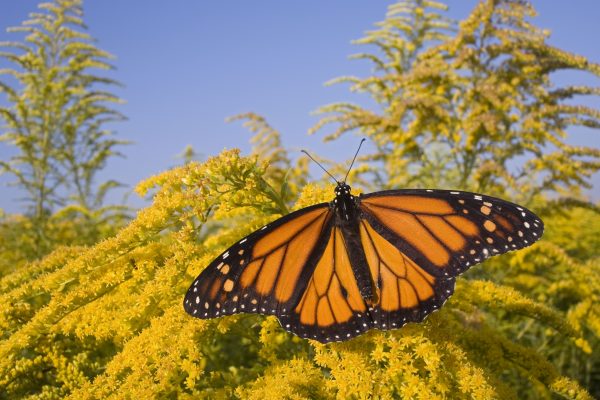Some Good News For Eastern Monarch Butterflies

Cloud of monarch butterflies (Danaus plexippus) flying, overwintering colony, Michoacan, Mexico. This winter, according to the World Wildlife Fund, they found the monarchs occupied nearly 15 acres of forest.
© naturepl.com / Ingo Arndt / WWF
Monarch butterfly numbers are better this year, at least for the population that migrates through Georgia. The bright orange and black insects have been in decline, but a survey released Wednesday by the World Wildlife Fund finds their numbers appear to be up.
The butterflies that were surveyed, which make up the eastern population of monarchs, spend their winter in colonies in Mexico, piled together in trees.
To monitor their populations, researchers track the area of forest occupied by the butterflies, rather than attempting to count insect-by-insect. This winter, according to the World Wildlife Fund, they found the monarchs occupied nearly 15 acres of forest. That’s up from a record low in the winter of 2013-14, when they were in just over 1.5 acres. Last winter the butterflies occupied more than 6 acres.
“The numbers that just came out are extremely encouraging,” said Trecia Neal, with the education group Monarchs Across Georgia. “This is really good news.”

There is reason to be happy said Jorge Rickards, director general of the World Wildlife Fund in Mexico, but it doesn’t mean the monarch population is stable.
“We cannot say the monarchs are actually recovering yet. We still have the threats that the monarch is facing,” he said.
The butterflies are threatened by illegal logging in Mexico, by pesticides and the loss of the plants they eat here in the U.S. and by climate change, Rickards said. And while Wednesday’s survey shows an increase, the numbers overall are still down. In the winter of 1995-96, the butterflies occupied nearly 45 acres of forest.
A couple weeks ago, there was grim news about the western monarch butterflies; the population that spends the winter in California has hit a record low. According to the Xerces Society, the butterflies have declined by 99.4 percent in California since the 1980s.
Monarchs start showing up in Georgia in mid-March on their way to Canada. While here, they lay their eggs on native milkweed plants.







